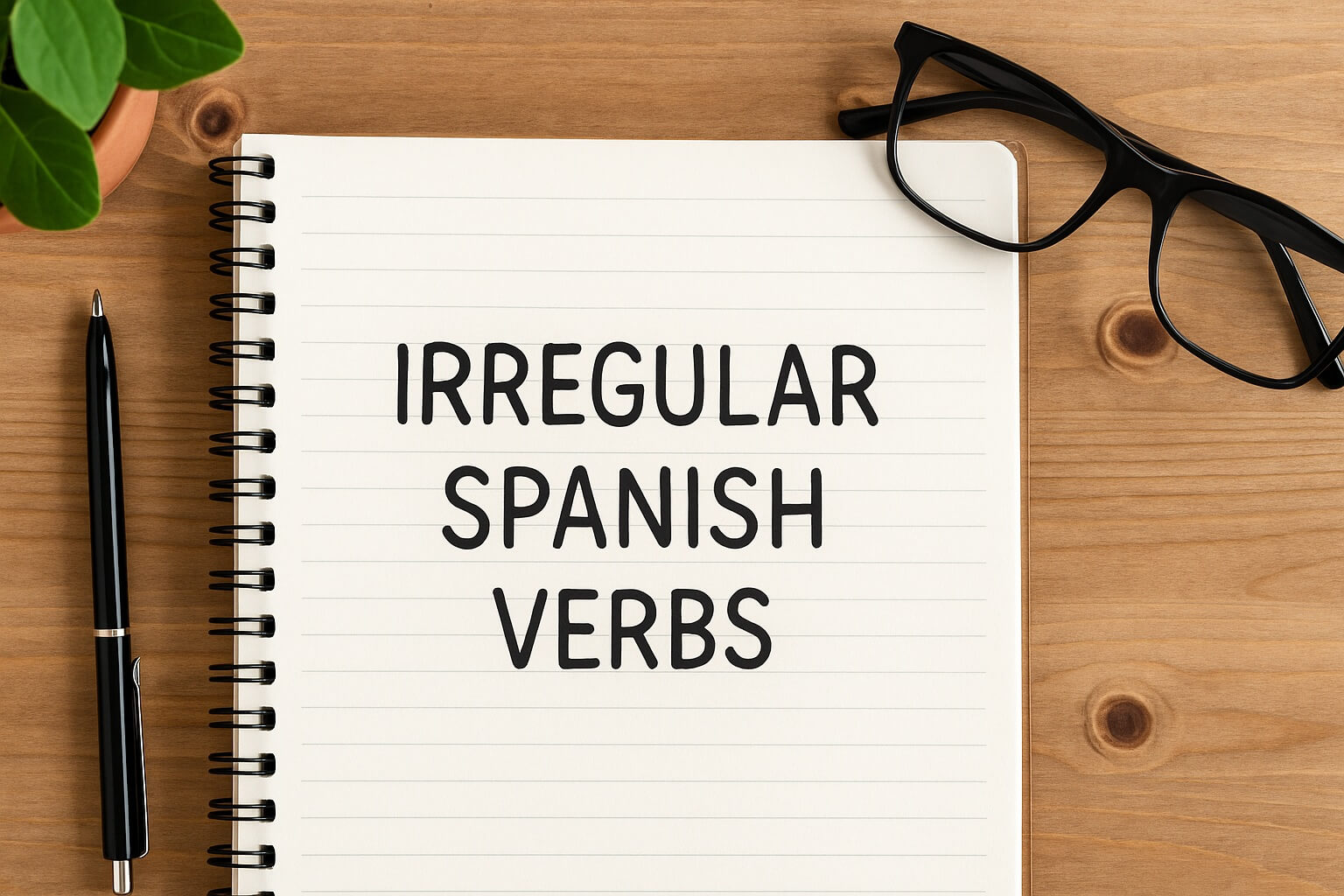
There’s no escaping irregular verbs when learning Spanish. They don’t follow standard conjugation rules and frequently appear in common phrases. The good news? You don’t need to learn them all at once. Focus on mastering the most common ones first.
Here are 15 essential irregular Spanish verbs, along with clear breakdowns and examples to help them stick in your memory.
1. Ser (to be — permanent)
Used for identity, origin, time, and traits.
Conjugation: Yo soy, tú eres, él/ella es, nosotros somos, vosotros sois, ellos son
Soy de México. – I’m from Mexico.
2. Estar (to be — temporary)
Used for emotions, locations, and conditions.
Conjugation: Yo estoy, tú estás, él/ella está, nosotros estamos, vosotros estáis, ellos están
Estoy cansado. – I’m tired.
3. Ir (to go)
Essential for talking about movement or plans.
Conjugation: Yo voy, tú vas, él/ella va, nosotros vamos, vosotros vais, ellos van
Vamos al cine. – We’re going to the movies.
4. Tener (to have)
Also used for age and expressions like “tener hambre.”
Conjugation: Yo tengo, tú tienes, él/ella tiene, nosotros tenemos, vosotros tenéis, ellos tienen
Tengo 25 años. – I am 25 years old.
5. Hacer (to do, to make)
Used for activities, weather expressions, and more.
Conjugation: Yo hago, tú haces, él/ella hace, nosotros hacemos, vosotros hacéis, ellos hacen
Hago ejercicio todos los días. – I work out every day.
6. Decir (to say, to tell)
Common in everyday speech and reporting statements.
Conjugation: Yo digo, tú dices, él/ella dice, nosotros decimos, vosotros decís, ellos dicen
Ella dice la verdad. – She tells the truth.
7. Poder (to be able to, can)
Crucial for expressing ability.
Conjugation: Yo puedo, tú puedes, él/ella puede, nosotros podemos, vosotros podéis, ellos pueden
¿Puedes ayudarme? – Can you help me?
8. Querer (to want, to love)
Useful for making requests or talking about preferences.
Conjugation: Yo quiero, tú quieres, él/ella quiere, nosotros queremos, vosotros queréis, ellos quieren
Quiero una cerveza. – I want a beer.
9. Venir (to come)
Often paired with “ir” when talking about coming and going.
Conjugation: Yo vengo, tú vienes, él/ella viene, nosotros venimos, vosotros venís, ellos vienen
¿Vienes conmigo? – Are you coming with me?
10. Poner (to put, to place)
Used in both literal and figurative contexts.
Conjugation: Yo pongo, tú pones, él/ella pone, nosotros ponemos, vosotros ponéis, ellos ponen
Pongo la mesa. – I set the table.
11. Salir (to leave, to go out)
Ideal for explaining plans and departures.
Conjugation: Yo salgo, tú sales, él/ella sale, nosotros salimos, vosotros salís, ellos salen
Salimos a las ocho. – We leave at eight.
12. Traer (to bring)
Useful in daily conversations and invitations.
Conjugation: Yo traigo, tú traes, él/ella trae, nosotros traemos, vosotros traéis, ellos traen
¿Traes tu computadora? – Are you bringing your laptop?
13. Oír (to hear)
Commonly used when describing sounds or asking someone to repeat something.
Conjugation: Yo oigo, tú oyes, él/ella oye, nosotros oímos, vosotros oís, ellos oyen
¿Oyes eso? – Do you hear that?
14. Dar (to give)
Frequently used in expressions and commands.
Conjugation: Yo doy, tú das, él/ella da, nosotros damos, vosotros dais, ellos dan
Te doy mi número. – I’ll give you my number.
15. Ver (to see)
Used both literally and metaphorically.
Conjugation: Yo veo, tú ves, él/ella ve, nosotros vemos, vosotros veis, ellos ven
Veo la televisión. – I watch TV.
Wrap-up
I know—these 15 irregular verbs seem overwhelming, but they’re everywhere. Spanish becomes much easier once you master these verbs. Don’t learn them all at once; pick a few, practice them in context, and move forward.



